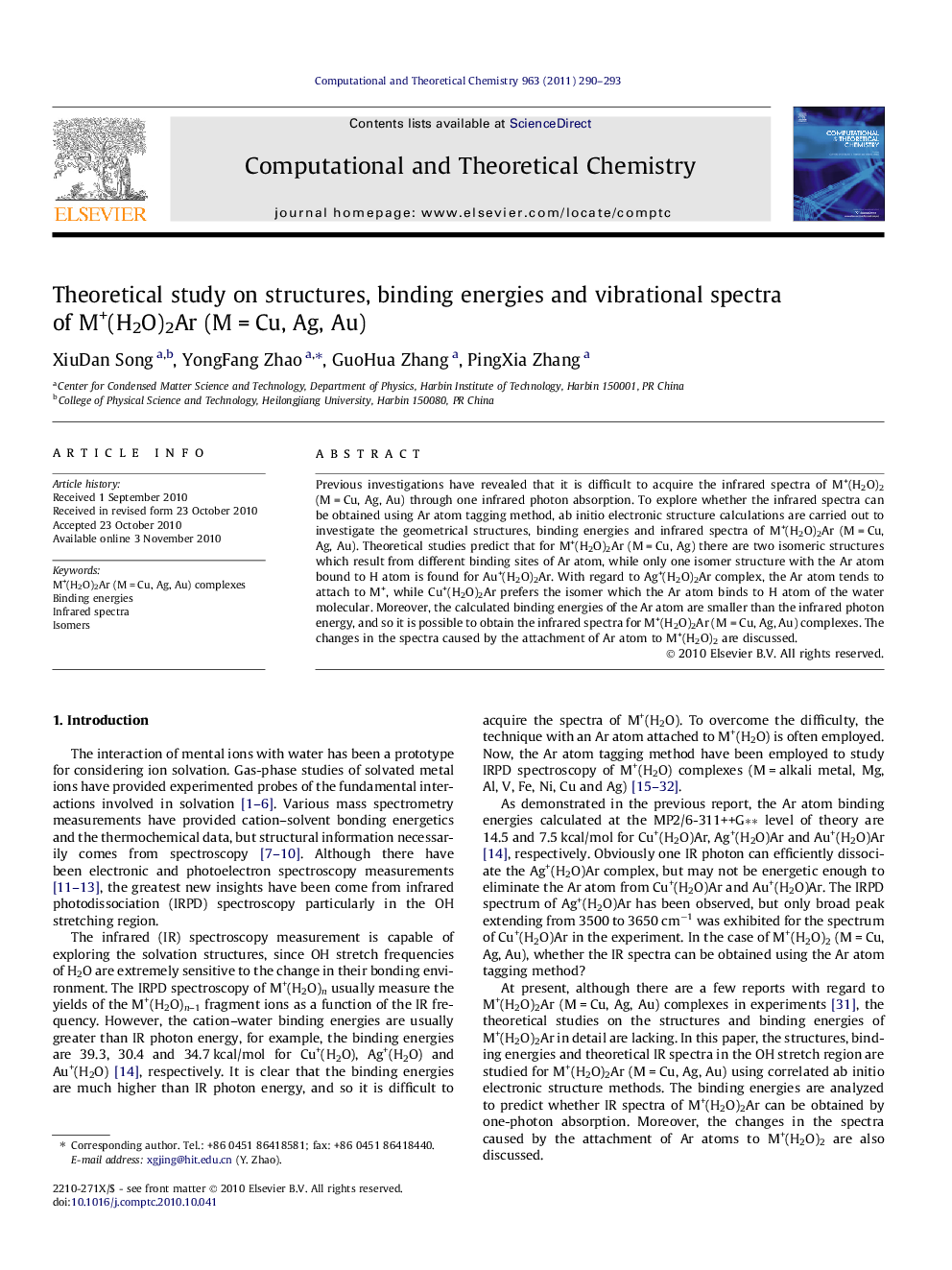| Article ID | Journal | Published Year | Pages | File Type |
|---|---|---|---|---|
| 5395376 | Computational and Theoretical Chemistry | 2011 | 4 Pages |
Abstract
Previous investigations have revealed that it is difficult to acquire the infrared spectra of M+(H2O)2 (MÂ =Â Cu, Ag, Au) through one infrared photon absorption. To explore whether the infrared spectra can be obtained using Ar atom tagging method, ab initio electronic structure calculations are carried out to investigate the geometrical structures, binding energies and infrared spectra of M+(H2O)2Ar (MÂ =Â Cu, Ag, Au). Theoretical studies predict that for M+(H2O)2Ar (MÂ =Â Cu, Ag) there are two isomeric structures which result from different binding sites of Ar atom, while only one isomer structure with the Ar atom bound to H atom is found for Au+(H2O)2Ar. With regard to Ag+(H2O)2Ar complex, the Ar atom tends to attach to M+, while Cu+(H2O)2Ar prefers the isomer which the Ar atom binds to H atom of the water molecular. Moreover, the calculated binding energies of the Ar atom are smaller than the infrared photon energy, and so it is possible to obtain the infrared spectra for M+(H2O)2Ar (MÂ =Â Cu, Ag, Au) complexes. The changes in the spectra caused by the attachment of Ar atom to M+(H2O)2 are discussed.
Related Topics
Physical Sciences and Engineering
Chemistry
Physical and Theoretical Chemistry
Authors
XiuDan Song, YongFang Zhao, GuoHua Zhang, PingXia Zhang,
